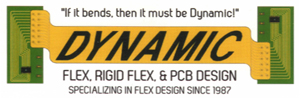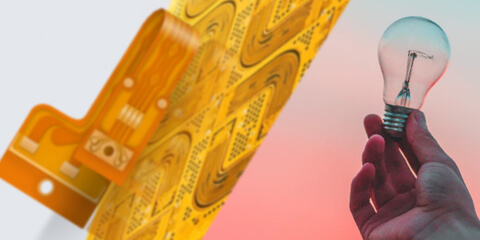Best Flexible Printed Circuits Tips You Will Read This Year
With numerous industries now using flexible printed circuits, it is becoming mandatory to focus on the processes, requirements, and education on terminology.
It has also become imperative to identify the best practices for maintaining a high probability of first-pass success for the development of a flex PCB. These designs comprise several layers of flexible circuit substrates.
In comparison to the design of a rigid-flexible circuit board, designers are blessed with a plethora of options when working with flexible PCB design comprising dense designs, conforming to a particular form factor.
With flexible boards, product designers may apply more functionality within smaller volumes of space in a more cost-effective manner while also offering better reliability and stability.
We understand the criticality of education on guidelines, processes, terminology, requirements, and best practices for reducing the challenges associated with flex circuit design. Therefore, we’ve got a few tips that may address these challenges.
1. Stack-up Management
Flexible and rigid circuits invariably have contrasting stack-ups, requiring the designer to ensure that they are efficiently managed. Also, these stack-ups must be conveyed appropriately to the fabricator. Often, this complicated task is made easier with an ECAD tool that offers board-specific and region-specific stack-up designs.
2. Board Outline Management
It is important to appropriately manage and configure the flexible board through the design process. Precisely, the actual design of a flexible circuit is more of an electromechanical project entailing close collaboration between the electrical and mechanical domains.
Here, saving time is a possibility if the mechanical CAD data may be imported and complex, and multiple board outlines are created automatically, thereby mitigating the probability of errors.
3. Interaction with Fabricator
This aspect is very critical to the design of a flexible board, offering meaningful feedback to the designer with respect to stack-up, flexible circuit board material, keep-out regions, bend requirements, and stiffness. All of this assists in ensuring that the design can undergo fabrication with appreciable dependability.
4. Signal Integrity and Power Analysis
It is important to ensure that the analytic tools acknowledge stack-ups and flexible layers, relating the analysis results to them instead of just assuming a single layer PCB with a uniform stack-up.
5. 3-D Design Verification
The design team must be capable of leveraging the space available in the product in each of its three dimensions while being able to deduce potential design issues that the flexible circuit may have.
They should be able to define the bend parameters like radius, angle, and bend origin while editing the design in 3-D. They should also be able to view the design with respect to the enclosure while performing 3-D flex-aware DRC (or design rule checks).
Since the majority of the new designers of FPC flex circuit design will likely be new to the flexible design requirements, these are some tips that will help them greatly.
- Keep both trace widths and spacing as large as possible.
- Use round corners to route traces instead of 90 degrees.
- Use true arcs to round the corners of the traces because segmented arcs often create stress fractures.
- Allow the traced contour to mimic the outline board contour. Make use of an ECAD tool that does this automatically because it will save time.
- When routing more than a layer, ensure that adjacent conductors have their traces staggered.
- While cross-hatching power/ground planes. Note that the cross-hatching substantially impacts the impedance of any conductor using a plan as a return path.
- Don’t forget to use the stiffeners, especially where the flex circuitry demands to place parts like a plug, jack, or an SMD connector.
Verdict
Obviously, these tips aren’t all-inclusive and are just introductory. However, these areas are prime where a first-time flex designer needs to familiarize and focus him/her quickly because these are important even for the simplest of flexible designs.
Besides the aforementioned areas of concern, designers would need to review more items that comprise bonding materials and laminates, copper surface finish, cover-lay design, impedance control, hole to bend distance, and construction options. The designer needs to discuss it with the fabricator for the review.
Lastly, it is time that designers start leveraging the latest ECAD tools available. This will not just improve their productivity but also mitigate the costs of development. For a highly probable first-pass success, it is important to combine adequate education with proper deployment tools.
People Also Ask: What is flexible technology?
Flexible technology is referred to as a type of technology that has been adapted to mold and still is breakable, which is quite fascinating. Not too long ago, the thought of flexible technology seemed distant. However, it has belligerently expanded to a number of products, for example, tablet books, ultra-portable folding keypads, yoga mat computers, etc.
People Also Ask: Why are electronics flexible?
The advantages of flexible electronics are plenty. First, they assure of an entirely new design tool.
For example, imagine tiny smartphones wrapped around our wrists and flexible displays being folded out as large as a television. Or reconfigurable antennas and photovoltaic cells that conform to the trunks and roofs of our cars. Or flexible implants monitoring and treating cancer or helping people with paraplegia walk again.
Second, it doesn’t cost must make flexible electronics. Traditional semiconductors entail multi-billion dollar foundries and complex processes. Researchers expect to print flexible electronics on plastic film in the same way ink is printed in newspapers.
People Also Ask: How are flex circuits made?
If you don’t prefer your long flex circuits to be designed by flexible printed circuit board manufacturers, you can use our DIY method. It isn’t difficult to make a single-sided flex circuit that is printed by using a copper-coated polyimide film, etching chemical for a common circuit board, and a solid ink printer. Just follow the following brief, flexible circuit board design guide:
- Get a copper-coated film
- Put a solid-ink printer to use
- Print on pyralux
- Etch it
- Populate the board

